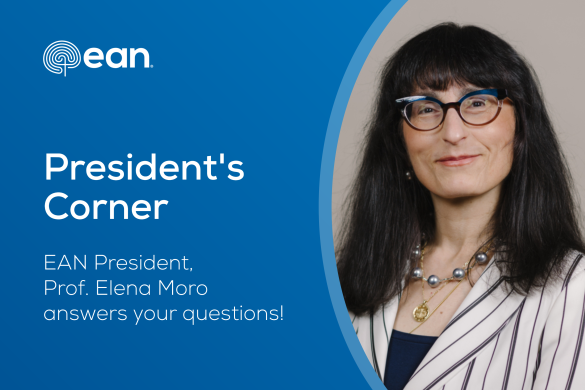Tim von Oertzen, Webeditor in Chief and Co-chair scientific panel epilepsy
One of the main aims of the European Academy of Neurology is to establish common standards of diagnosis, treatment and care within the various subfields of neurology across Europe. As a region of diverse jurisdictions, languages, markets and healthcare challenges, European neurology needs to establish not only guidelines for the diagnosis and the treatment of neurological disorders, but also in order to maintain and enhance the discipline and practice of neurology.
To serve that very purpose, I have introduced the Guideline Reference Center, bringing together the vast array of guidelines in neurology from different European countries and in the future subspecialty societies, making them accessible and searchable to neurologists.
Today, the quality of medical treatment depends heavily on results from evidenced-based medicine and this has to meet certain quality standard levels. In order to benchmark these standard levels, several organisations release guidelines, technical appraisals or expert opinions. The guidance might be based on circumstances, for instance relating to national resources or requirements within the health system. As EAN represents 47 countries, we decided to create the Guideline Reference Center, as a resource to neurologists across Europe and beyond, where they can easily access EAN guidelines as well as links to guidelines from various other bodies within the EAN as well as many others outside the EAN (e.g. specialty and subspecialty organisations). This allows us to compare different guidelines and standards for the same topics and provide access to the most current knowledge and best practices.
The EAN Guideline Reference Center helps members to locate information on evidence-based neurological diagnosis and management easily. There are currently 237 guidelines available within the Guideline Reference Center covering a wide range of neurological conditions and provided by a wide range of organisations and national societies, including France and Portugal, which are the most recent countries to provide guidelines. As the aim of the Guideline Reference Center is to provide a search tool for guidelines from multiple organisations and languages, this year EAN will continue to work closely with national neurological societies to ensure a comprehensive range of guidelines from around Europe are included, covering all of Europe’s main languages and making the guidelines more representative of, and useful to, our members.
If you are not already ready familiar with the EAN Guideline Reference, I highly encourage you to visit the EAN website and navigate to the Reference Center, which you will find under the Research tab. You can then search through a collection of EAN/EFNS/ENS guidelines according to topic, year of publication and other categories. Furthermore, if you are logged in as a member, you also have access to guidelines from many other guideline issuing bodies from across Europe. You can even search for guidelines by language. In addition, EAN members have access to the European Journal of Neurology so that they can read the full content of all EAN guidelines, as well as those from the EFNS/ENS. Where possible we provide links to the guidelines from other issuing bodies. However, access rights to those guidelines depend on the rules of the respective guideline issuing body.
The Guideline Reference Center also allows you to filter your searches by publication date, topic, issuing organisation and more. This is sure to be of great benefit to our members, giving them the ability to monitor and stay abreast of developments over time according to different structural, logistic or political settings, as well as from national and international perspectives. And remember, if you are a member of a national neurological society in Europe, you are automatically a member of EAN. If you don’t have any log on details, please contact headoffice@ean.org .
On behalf of everyone at EAN, I highly encourage you to make use of this wonderful resource, and I look forward to enhancing the EAN Guideline Reference Center with even more content in 2020.














